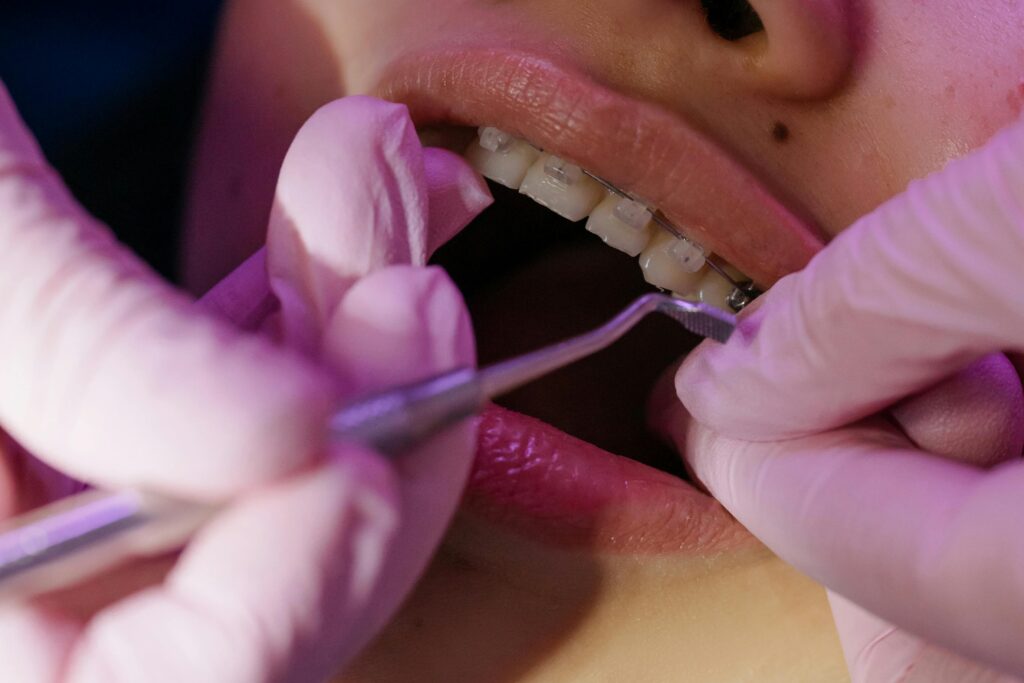Introduction
Maintaining optimal dental health is crucial for overall well-being, as oral health is closely linked to systemic health. Teeth diseases encompass a range of conditions affecting the teeth, gums, and supporting structures, from common issues like cavities to more serious conditions such as periodontal disease. Understanding the causes, symptoms, preventive measures, and treatment options for teeth diseases is essential for preserving a healthy smile and preventing complications. This article explores various teeth diseases, their impact on oral health, and comprehensive strategies for maintaining strong, healthy teeth and gums.
Importance of Dental Health
Dental health plays a significant role in overall health and quality of life:
- Chewing and Nutrition
- Healthy teeth are essential for proper chewing and digestion of food, promoting optimal nutrition.
- Maintaining teeth health supports overall well-being and energy levels.
- Speech and Communication
- Teeth contribute to clear speech and effective communication.
- Dental health influences self-confidence and social interactions.
- Prevention of Oral Diseases
- Good oral hygiene prevents common teeth diseases such as cavities and gum disease.
- Regular dental check-ups help detect early signs of dental problems and prevent complications.

Common Teeth Diseases
Understanding the causes and symptoms of common teeth diseases facilitates early intervention and effective treatment:
- Dental Cavities (Caries)
- Causes: Cavities are caused by bacteria (plaque) that produce acids, which erode tooth enamel over time. Factors such as poor oral hygiene, sugary foods, and acidic beverages contribute to cavity formation.
- Symptoms: Toothache, sensitivity to hot, cold, or sweet foods, visible holes or pits in the teeth.
- Prevention: Maintain good oral hygiene practices, limit sugary snacks and drinks, use fluoride toothpaste, and visit the dentist regularly for cleanings and exams.
- Gum Disease (Periodontal Disease)
- Causes: Gingivitis, the early stage of gum disease, is caused by plaque buildup along the gumline. Without treatment, it can progress to periodontitis, where bacteria penetrate deeper into the gums, leading to bone and tooth loss.
- Symptoms: Swollen, tender, or bleeding gums, persistent bad breath, receding gums, loose teeth.
- Prevention: Brush and floss daily, use an antiseptic mouthwash, quit smoking, and schedule regular dental check-ups.
- Tooth Sensitivity
- Causes: Exposed tooth roots due to gum recession, enamel erosion from acidic foods or beverages, cracked teeth, or worn fillings.
- Symptoms: Pain or discomfort when consuming hot, cold, sweet, or acidic foods and beverages.
- Prevention: Use a soft-bristled toothbrush and gentle brushing technique, avoid acidic foods and drinks, use desensitizing toothpaste, and consult with a dentist for treatment options.
- Tooth Erosion
- Causes: Acidic foods and beverages (e.g., citrus fruits, sodas), gastroesophageal reflux disease (GERD), bulimia, or excessive brushing with abrasive toothpaste.
- Symptoms: Thinning, transparent, or discolored teeth, increased sensitivity, rough edges or notches on the tooth surface.
- Prevention: Limit consumption of acidic foods and drinks, rinse mouth with water after consuming acidic substances, use fluoride toothpaste, and avoid aggressive brushing.
- Dental Abscess
- Causes: Bacterial infection within a tooth (periapical abscess) or between the gum and tooth (periodontal abscess), usually resulting from untreated cavities or gum disease.
- Symptoms: Severe, persistent toothache, swelling of the face or gums, fever, foul-tasting discharge.
- Prevention: Practice good oral hygiene, treat cavities and gum disease promptly, and seek immediate dental care for any signs of infection.
Steps to Maintain Healthy Teeth and Gums
Adopting a proactive approach to oral care helps prevent teeth diseases and promotes overall dental health:
- Daily Oral Hygiene Routine
- Brushing: Brush teeth twice daily with fluoride toothpaste and a soft-bristled toothbrush. Use gentle, circular motions and brush all tooth surfaces, including the gumline.
- Flossing: Clean between teeth and along the gumline daily to remove plaque and food particles.
- Mouthwash: Use an antiseptic mouthwash to reduce plaque buildup and bacteria.
- Healthy Dietary Habits
- Limit sugary and acidic foods and beverages that contribute to tooth decay and erosion.
- Choose nutritious foods rich in calcium, phosphorus, and vitamins (e.g., dairy products, leafy greens, lean proteins) to support dental health.
- Regular Dental Check-Ups
- Schedule dental exams and cleanings at least twice a year or as recommended by your dentist.
- Early detection of teeth diseases allows for prompt treatment and prevents complications.
- Use Protective Measures
- Wear a mouthguard during sports activities to prevent dental injuries.
- Use fluoride treatments or dental sealants as recommended by your dentist to strengthen tooth enamel and protect against decay.
- Quit Smoking and Tobacco Use
- Smoking and tobacco use increase the risk of gum disease, oral cancer, and tooth loss. Quitting smoking improves oral and overall health.
Treatment Options for Teeth Diseases
Effective treatment of teeth diseases depends on the specific condition and its severity:
- Dental Fillings and Restorations
- Used to repair cavities and restore damaged tooth structure. Materials include composite resin, amalgam, or porcelain.
- Root Canal Therapy
- Removes infected pulp tissue from a tooth and seals the root canal to prevent further infection or abscess formation.
- Periodontal Treatment
- Scaling and root planing (deep cleaning) to remove plaque and tartar from below the gumline.
- Antibiotic treatments or surgical procedures for advanced periodontitis.
- Tooth Extraction
- Removal of severely decayed, infected, or impacted teeth that cannot be saved with other treatments.
- Followed by options such as dental implants, bridges, or dentures to restore function and appearance.
- Cosmetic Dentistry
- Procedures like teeth whitening, veneers, or orthodontic treatments to improve the appearance of teeth and enhance smile aesthetics.

Conclusion
Maintaining healthy teeth and preventing teeth diseases is essential for oral health, overall well-being, and quality of life. By understanding the causes and symptoms of common teeth diseases, adopting a proactive oral hygiene routine, making healthy dietary choices, and seeking regular dental care, individuals can preserve their natural teeth and gums. Early detection and prompt treatment of teeth diseases prevent complications, such as tooth loss and systemic health issues associated with oral infections. Incorporating preventive measures and practicing good oral habits promote a lifelong smile and optimal dental health.
Resources
- American Dental Association (ADA): Provides resources on oral health, dental care tips, and finding a dentist.
- National Institute of Dental and Craniofacial Research (NIDCR): Offers information on dental diseases, treatments, and research initiatives.
- Academy of General Dentistry (AGD): Provides education and support for dental professionals and patients on oral health topics.
